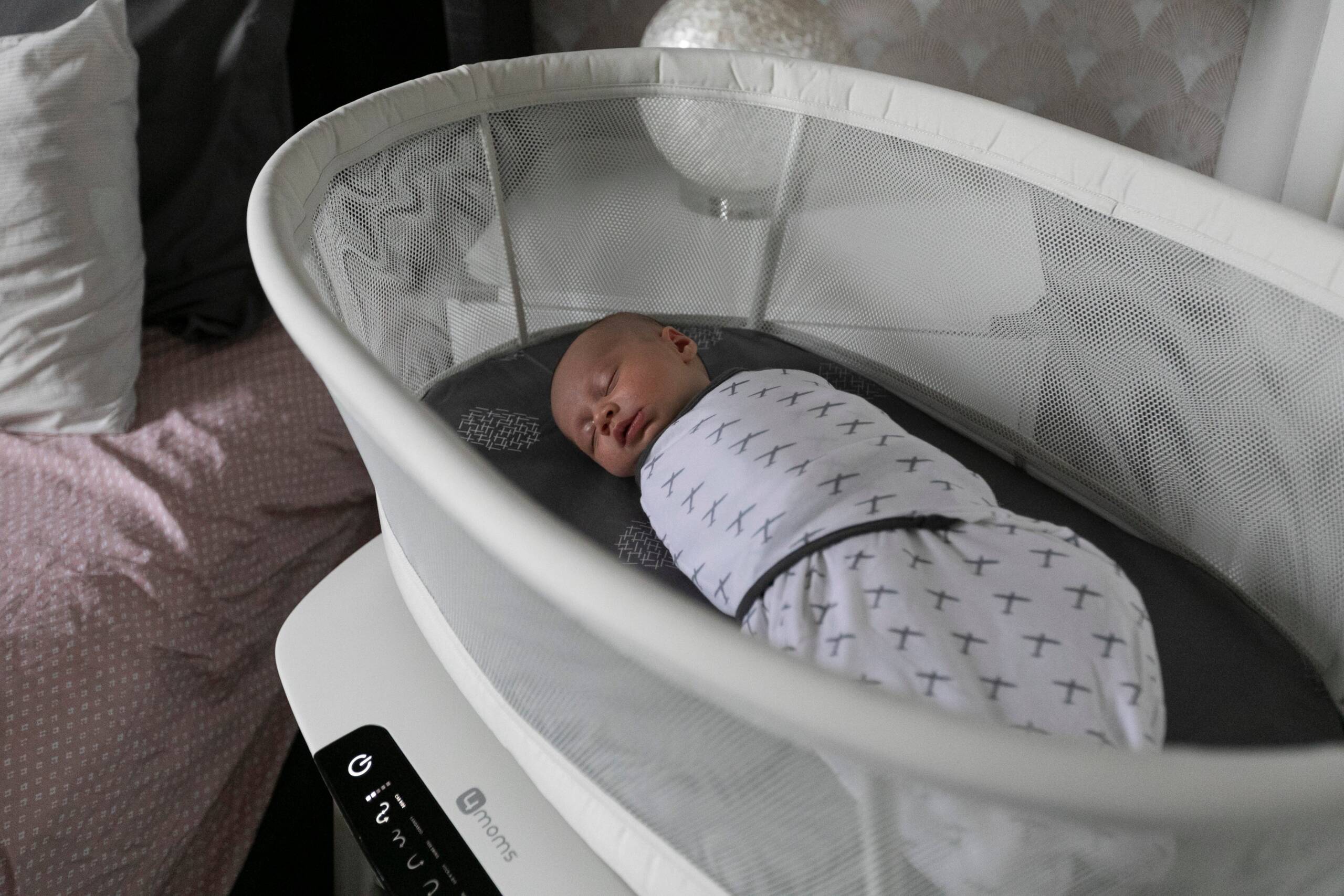Importance of Baby Sleep
Proper sleep is essential for a baby’s growth and development. It impacts their physical health, brain development, and overall well-being. Quality sleep helps in the consolidation of memories, supports the immune system, and aids in growth. Conversely, sleep deprivation in infants can lead to irritability, poor feeding, and developmental delays. Understanding and facilitating good sleep patterns is crucial for both the baby and the parents’ well-being.
Understanding Sleep Transitions
Sleep transitions refer to the changes in sleep patterns that babies go through as they grow. These transitions are a natural part of development, but they can be challenging for both babies and parents. Common sleep transitions in the first year include changes in nap schedules, nighttime awakenings, and the shift from multiple night feedings to longer stretches of sleep.
Newborn Sleep Patterns
What to Expect in the First Months
Newborns typically sleep a lot, often around 16 to 18 hours a day. However, their sleep cycles are much shorter than adults’, usually lasting 50-60 minutes. This means they wake frequently, often needing to feed every 2-3 hours. Understanding these patterns can help parents set realistic expectations and reduce frustration.
Creating a Sleep-Conducive Environment
A conducive sleep environment is vital for helping newborns sleep better. The room should be kept at a comfortable temperature, usually between 68-72°F (20-22°C). Using blackout curtains can help maintain a dark environment, and white noise machines can mask disruptive sounds. It’s also essential to ensure the crib is safe, free from loose bedding and soft toys.

Sleep Regression
What is Sleep Regression?
Sleep regression refers to a period when a baby who has been sleeping well suddenly starts waking frequently at night or having trouble napping. This can be due to developmental milestones, teething, or changes in routine. Recognizing the signs and understanding the causes can help parents navigate these challenging times.
Common Ages for Sleep Regressions
Sleep regressions commonly occur at specific ages, such as:
- 4 months: Due to a significant change in sleep cycles and increased alertness.
- 8-10 months: Often linked to crawling, pulling up, and separation anxiety.
- 12 months: Associated with walking and transitioning to one nap a day.
Handling Sleep Regressions
Managing sleep regressions involves maintaining a consistent bedtime routine, offering comfort without creating new sleep associations, and being patient. It’s also helpful to ensure the baby gets enough daytime sleep to avoid overtiredness. If sleep regressions persist or severely impact the baby’s health, consulting a pediatrician or sleep specialist may be necessary.
Transitioning from Co-Sleeping to Crib
Pros and Cons of Co-Sleeping
Co-sleeping has its benefits, such as easier breastfeeding and enhanced bonding. However, it also comes with risks, including potential safety hazards and sleep disturbances for both baby and parents. Evaluating these pros and cons can help parents make informed decisions about their sleep arrangements.
Steps to Transition from Co-Sleeping
Transitioning from co-sleeping to a crib should be gradual to ensure the baby feels secure. Start by placing the crib next to your bed, then slowly move it farther away over time. Establishing a consistent bedtime routine and making the crib a positive space can also ease the transition.
Naps and Nighttime Sleep
Establishing a Napping Routine
Daytime naps are crucial for a baby’s development and can significantly affect nighttime sleep. Creating a consistent nap schedule helps regulate the baby’s internal clock. It’s important to follow a regular routine and recognize the baby’s sleep cues to avoid overtiredness.
Differences Between Naps and Nighttime Sleep
Naps and nighttime sleep serve different purposes. Naps help alleviate daytime sleep pressure and allow for recovery from developmental activities. Nighttime sleep is more restorative and involves deeper sleep stages. Adjusting routines to balance both is essential for the baby’s overall sleep health.
Sleep Training Methods
Overview of Sleep Training
Sleep training involves teaching babies to fall asleep independently. It’s a topic of much debate, but many parents find it effective. The goal is to help the baby develop self-soothing skills, leading to longer stretches of sleep.
Popular Sleep Training Techniques
Several sleep training methods are popular among parents:
- Ferber method: Involves letting the baby cry for gradually increasing intervals before offering comfort.
- Cry it out (CIO) method: Also known as extinction, where the baby is left to cry until they fall asleep.
- No-tears method: Focuses on gentle, gradual changes to avoid crying.
Choosing the Right Method for Your Baby
Choosing a sleep training method depends on the baby’s temperament, the parents’ comfort level, and the family’s overall needs. It’s often helpful to combine techniques and remain flexible, adjusting as needed based on the baby’s response.

Dealing with Sleep Disruptions
Teething and Sleep
Teething can disrupt a baby’s sleep due to discomfort and pain. Using teething toys, offering cold washcloths, and providing gentle gum massages can help soothe the baby. Over-the-counter pain relief should only be used under pediatric guidance.
Illness and Sleep
Illness can also affect sleep patterns. Keeping the baby comfortable, maintaining hydration, and following the pediatrician’s advice are crucial. During illnesses, it’s often necessary to prioritize the baby’s comfort over strict sleep schedules.
Tips for Consistent Sleep
Creating a Bedtime Routine
A consistent bedtime routine signals to the baby that it’s time to sleep. This routine can include activities such as a warm bath, reading a book, and gentle rocking. Consistency is key to establishing a predictable and calming pre-sleep environment.
Using Sleep Aids Safely
Sleep aids like swaddles, white noise machines, and pacifiers can be helpful. However, it’s important to use them safely and be mindful of potential dependencies. For instance, swaddling should be stopped once the baby can roll over, and pacifier use should be monitored to prevent dental issues.
Understanding and Adapting to Sleep Needs
Individual Differences in Sleep Needs
Every baby is different, and their sleep needs can vary. Some may need more sleep than others, and recognizing these differences can help parents adapt their routines to better suit their baby’s needs.
Tracking Sleep Patterns
Tracking sleep patterns can provide valuable insights into the baby’s sleep needs and habits. Parents can use tools like sleep logs or mobile apps to monitor sleep durations and identify patterns, helping to adjust routines and troubleshoot issues.
The Role of Nutrition
Impact of Diet on Sleep
A baby’s diet significantly affects their sleep. Breastfeeding, formula, and the introduction of solid foods all play a role. Ensuring the baby is well-fed before sleep can prevent night wakings due to hunger.
Night Feedings
Night feedings are common in the early months, but over time, reducing and eventually eliminating these can help improve sleep. Gradual weaning techniques and ensuring the baby gets enough daytime nutrition can ease this transition.
Parental Well-being
Coping with Sleep Deprivation
Parents often face sleep deprivation when managing their baby’s sleep transitions. Strategies such as napping when the baby naps, sharing nighttime duties with a partner, and seeking support from family and friends can help parents cope.
Seeking Support
It’s important for parents to seek support when needed. This can include help from family, friends, or professional support from pediatricians and sleep consultants. Support networks can provide both practical help and emotional encouragement.










